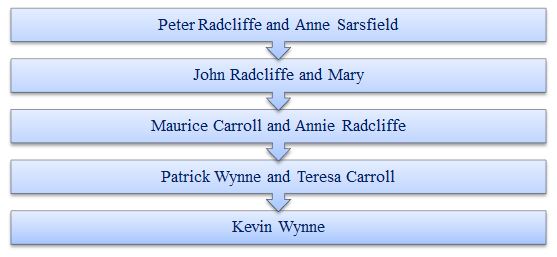Do you remember that I got the DNA kits for Christmas? Well, the results are in. The first results that I looked at were the Population Finder results, attempting to identify the geographic origins of our ancestors.
Dad’s DNA results show 99.15% Orcadian (British Isles), as expected, while Mam’s show 95.16% Orcadian (British Isles) but have a surprise 4.84% South Asian (Southeast Indian, North Indian) element.
The Population Finder program examines DNA called 'autosomal DNA', which we inherit 50% from each parent, who in turn inherited 50% from each of their parents, so all lines are theoretically represented. We have about 25% DNA in common with each grandparent, 12.5% in common with each great-grandparent, etc., but by the time we go back further than the great-great-great-grandparents, the DNA gets so diluted it’s difficult for it to be attributed to anyone in particular. So, the test is supposedly only looking back about five or six generations and for our family we ‘know’ that these ancestors were probably mostly Irish. Given the surnames Radcliffe, Sarsfield, etc. in our family tree we might expect the odd English ancestor too.
I suppose you were wondering what Orcadian (British Isles) DNA is. Well, the Population Finder compares each person’s DNA to 'the DNA of hundreds of ethnic groups around the world', except they didn’t incorporate a sample of ‘Irish’ DNA per se. The British Isles were seemingly represented by DNA samples taken in the Orkney Islands, which is an isolated spot to the north of Scotland. Obviously, Orcadian DNA is quite different to Irish DNA, so, to better represent average Irish DNA, 'the computer' then mixes in DNA from elsewhere, e.g. South Asia. You can see how this process might give rise to some spurious results. Given Mam’s surprise element is only about 5%, we probably don’t have any Indian ancestors in the past five or six generations.
Dr. Doug McDonald helped FTDNA write the Population Finder program and helpfully explained how results like Mam’s might be read.1 If I understand him correctly, roughly speaking, with 5% Indian DNA, Mam may have had an ancestor(s) who came from southern England, which is where you’d be if you were 240 miles (or 5% ) of the way from Dublin to middle-India (4,750 miles). This is a crude calculation and I’m not sure if maybe you should start the journey from the Orknies as opposed to from Dublin, but you get the gist – we might have an ancestor from Britain, not India.
So, does that mean that Dad’s results are the strange ones after-all, given that they match the Orknies so well?
……………….
© 2014 Black Raven Genealogy







